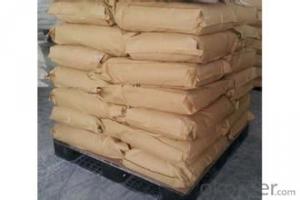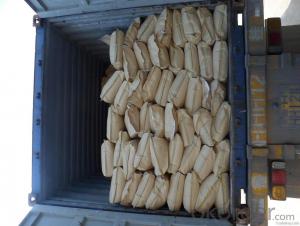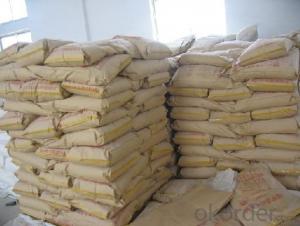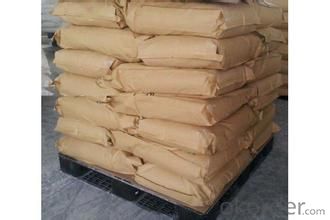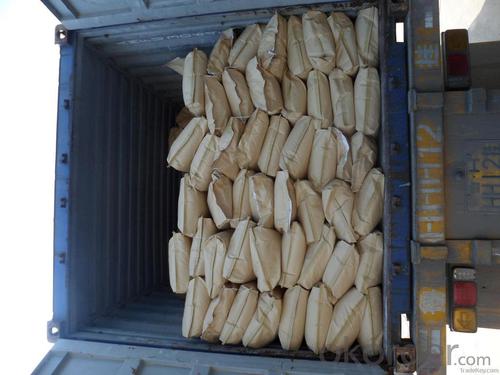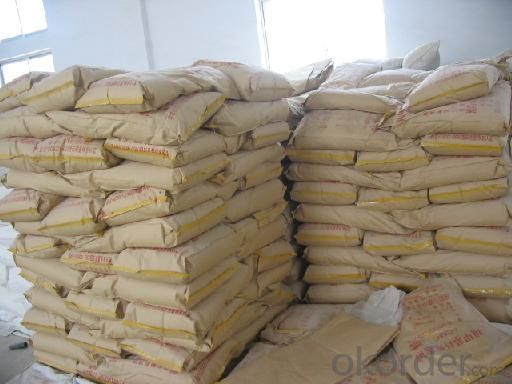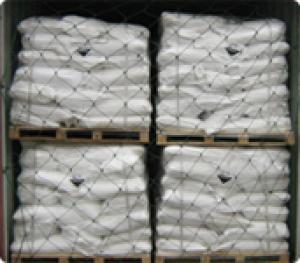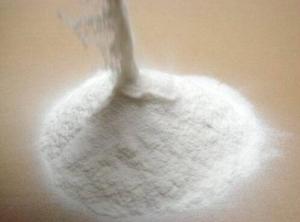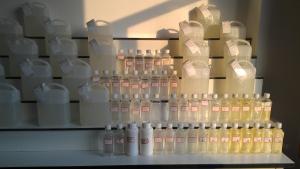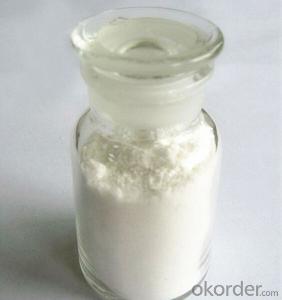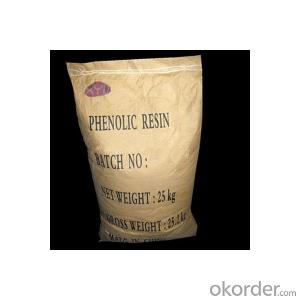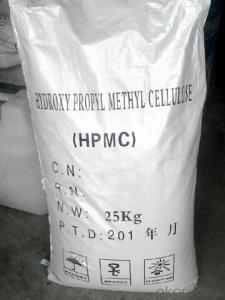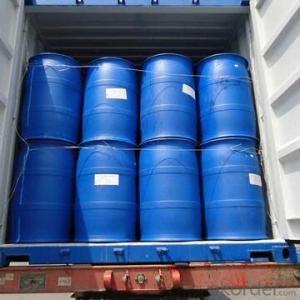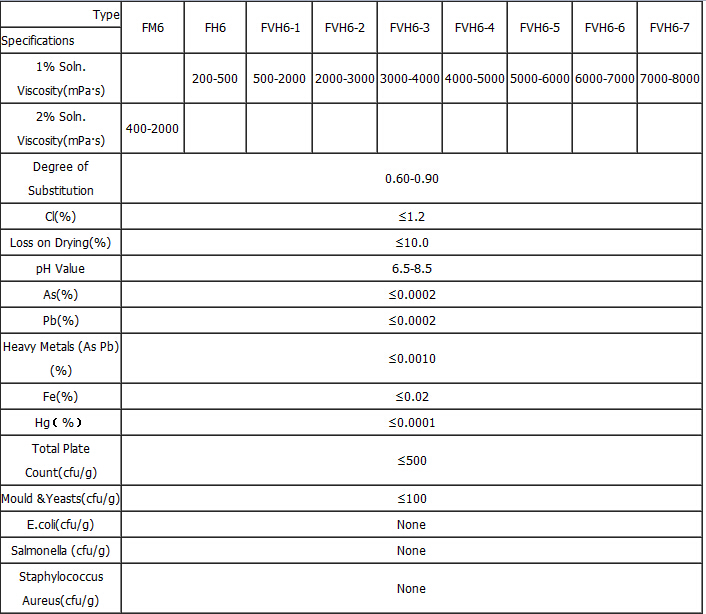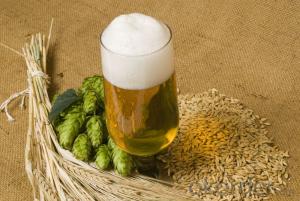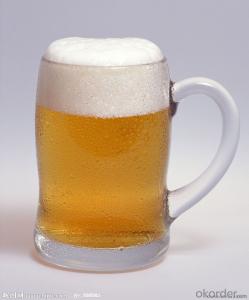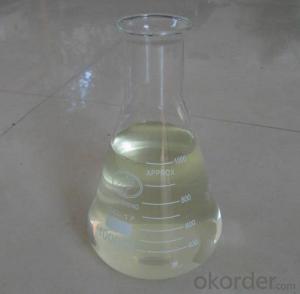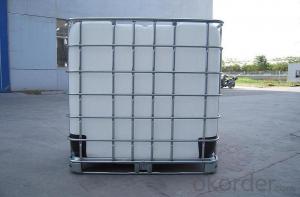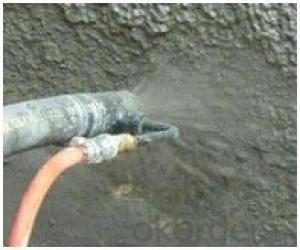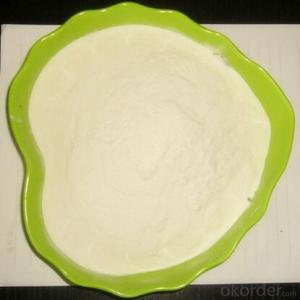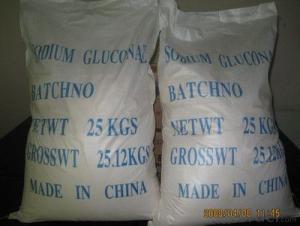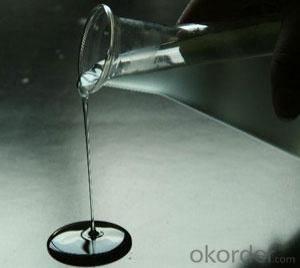Food Grade CMC Carboxymethyl Cellulose FH9-A1
- Loading Port:
- Shanghai
- Payment Terms:
- TT OR LC
- Min Order Qty:
- 20 m.t.
- Supply Capability:
- 8000 m.t./month
OKorder Service Pledge
Quality Product, Order Online Tracking, Timely Delivery
OKorder Financial Service
Credit Rating, Credit Services, Credit Purchasing
You Might Also Like
| Food Grade CMC Used as additive in food field, CMC has the functions of thickening, suspending, emulsifying, stabilizing, shaping, filming, bulking, anti-corrosion, retaining freshness, acid-resisting, health protecting, etc. It can replace the application of guar gum, gelatin, agar, sodium alginate, and pectin. It is widely used in modern food industry, such as frozen food, solid drink, fruit juice, jam, lactic acid drinks, condiment, biscuit, instant noodles, bakery products, meat products, etc. |
|
Technical Specifications of Food Grade CMC(1)
|
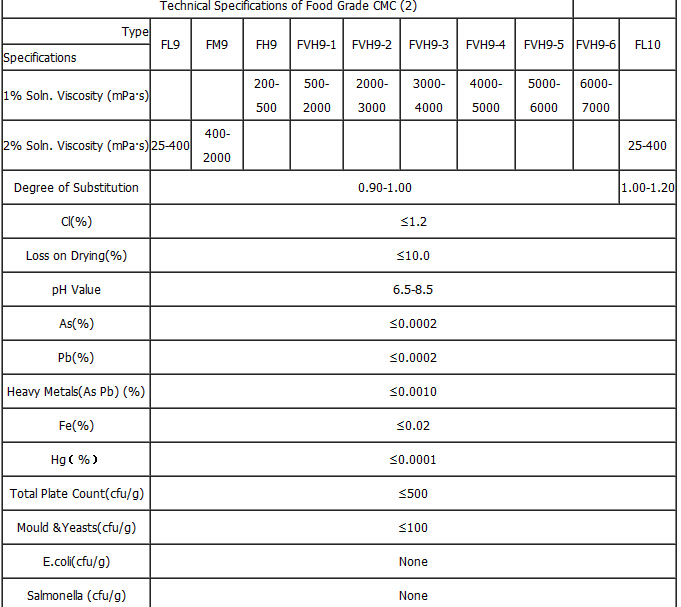 |
- Q: Whats the best oil additive for a four cylinder. There are so many. I think zmax?
- use a product called restore its comes in a silver can with black writing
- Q: I know what an additive inverse is,(5,-5 2,-2) but what I dont get is why its called the additive inverse. If you take a number like -5 then shouldnt the additive inverse be correctly called 10 to get 5? because its the add-itive inverse(opposite).
- When you want to find something to ADD to get back to zero. Examples: The additive inverse of 3 is -3. The additive inverse of 4pi - x is x - 4pi. Additive inverses are very basic (axiomatic) definitions of systems of numbers, vectors, sets, whatever. It's really just a fancy way of sayingthe negative of." But, for some other funny number systems (for example, binary... where there are only 1's and 0's), it's not as simple as just putting a negative sign in front. Again thedictionary" definition is: that which you must add to a given value to achieve a sum of zero. Good luck. Don't let the terminology kill you. Most stuff in math is pretty simple. They just like to try to trip you up.
- Q: I bought my used salvaged car in what looks to be a very good condition. I do oil changes EVERY 3000 miles, sometimes less. I use 5w-20 like the manufacturer ask. My last oil change was actually done at a quick lube place. they used their stupid over stock 10w-30 and probably crappy oil filter. I‘ll see what oil filter they used today when I do my oil change. (I was busy and asked a friend of mine to get the oil changed)Anyways. I‘ve had this problem for a while now. Now that it‘s getting colder, my engine is starting to knock or click or whatever in the cold morning when I first start up my car. I want to use Gunk Engine Flush and Lucas Heavy Duty Oil Stabilizer. I actually want to start flushing my engine out before every oil change and I want to see if the stabilizer will stop the knocking. I‘ll switch to synthetic on my next oil change to see a difference. Then, I‘ll go back to conventional to see if there really is a difference. What are your thoughts?
- For the best answers, search on this site shorturl.im/axXZT If you have the oil and filter changed according to accepted change intervals (3000 - 5000 miles, provided not more than 3 months elapse between changes) you will NEVER need an engine flush, unless you experience a blown head gasket which causes coolant to become mixed with the oil. Engine flushes were commonly needed back in the '60's because the oil additives in use then were much less capable of keeping the bad stuff in the oil in suspension and removing it from the engine oil is drained. With today's type SF and SG oils this simply is not a problem. Hawking engine oil flushes today is akin to selling Snake Oil and only the inexperienced quick lube employees who are brainwashed to sell sell sell believe it is of any benefit in a normal operation and maintainance program. A cooling system flush about every 30 to 50 thousand miles along with the installation of new coolant is good maintainance.
- Q: I am resurrecting my 1884 Honda Nighthawk 700sc. It hadn’t ran since 95 but now that I have cleaned the tank; replaced oil, plugs, fuel filter, and air filter; it actually starts and runs. It has a hard time idling however and seems to backfire sometimes on a quick down-throttle. Is there a fuel additive anyone can recommend that will help clean the carbs?
- You do not need to get new carbs if the only problem is sitting unused with gas in them. The best thing, as mentioned, is to take them apart and totally clean them. Or, you might want to try this first. Get a product called Seafoam. Put in the tank and run the bike at speed. It will run rough at first but if you can ride it at speed then this MAY (depending on how bad the carbs are gummed up) clean them out. This may take as little as 15 minutes riding time or as much as a tank of gas. If it still doesn't run properly after a tank then definately have to revove and clean the carbs.
- Q: I have four numbers: 9, -0.83, 3/10, and -5 1/3. I‘m supposed to use two of them to illustrate distributive property. I know how to do that, but the next step is, Give the additive inverse of one of your numbers. Then, in a separate problem, I‘m guessing, Give the multiplicative inverse of one of your numbers. I‘m really confused. What are additive and multiplicative inverses? Thanks.
- The additive inverse is the number that, when added to your original number, gives you zero. This is just the negative of the number. The multiplicative inverse is the number that you multiply your original number by to get 1. This is 1/x, x being your number. so 1/9, 10/3 etc.
- Q: According to the provisions of the state, the use of food additives need to have what conditions
- Should not cover up the food itself or the quality of the process defects or doping, adulteration, forgery for the purpose of the use of food additives;
- Q: i just bought a bottle of lucas transmission fix for my k5 blazer. when i add this to the fluid do i have to take some transmission fluid out, or just pour the bottle in.
- iron is an naturally occurring element so it was part of the earths core in the formation of the earth.
- Q: is it possible to get rid of food additives/preservatives by boiling food at high temperatures? I know this works for bacteria but not so sure about the former.
- I wouldn't consider boiling bread or cake or cheetos. many Pastas have additives, and you can boil it for days to try and remove them, but I don't suggest it. In short, you cannot boil a food to get rid of additives. Your best bet is to change your diet. And as someone said previously read the label. Good luck.
- Q: what is the meaning of "additive multilingualism"?
- I think you can extract the definition from the following context: . The language policy is currently being revised and we will advise schools once the revised policy has been gazetted. The policy will refine our approach to these issues. The Language in Education Policy recognises the critical importance of mother-tongue as the language of the heart and the hearth. The policy also promotes additive multilingualism. This means that learners must learn additional languages at the same time as maintaining and developing their home languages. Additive multilingualism makes it possible for learners to acquire complex skills such as reading and writing in their strongest language. They are then able to transfer these skills to their additional language. . The policy of the WCED is to provide mother-tongue instruction in the Foundation Phase, followed by additive multilingualism in subsequent phases, in line with national policy.
- Q: I‘ve got a worn out Chevy Silverado which I use RESTORE oil additive in faithfully because it simply ‘works‘. I was curious if I could use more to help out the engine even that much more. I was thinking 2 bottles instead of just one. Which would replace 2 quarts of oil instead of just one. Would this work or will it have a negative effect more or less because of the lack of oil? Honestly I don‘t think I can hurt this engine because it‘s so worn out and all that it‘s been through too. Any input is appreciated. Thanks!
- Restore engine oil additive comes in pint cans only. Two pints not quarts of this thick molasses in the crankcase during the Winter would severely slow down the oil pumps ability of delivering a large volume of lubricant to all frictional surfaces. When the oil pump turns hard you loose horsepower. Why do you think RESTORE works? There's no detergent package in it or EP properties.
Send your message to us
Food Grade CMC Carboxymethyl Cellulose FH9-A1
- Loading Port:
- Shanghai
- Payment Terms:
- TT OR LC
- Min Order Qty:
- 20 m.t.
- Supply Capability:
- 8000 m.t./month
OKorder Service Pledge
Quality Product, Order Online Tracking, Timely Delivery
OKorder Financial Service
Credit Rating, Credit Services, Credit Purchasing
Similar products
Hot products
Hot Searches
Related keywords

